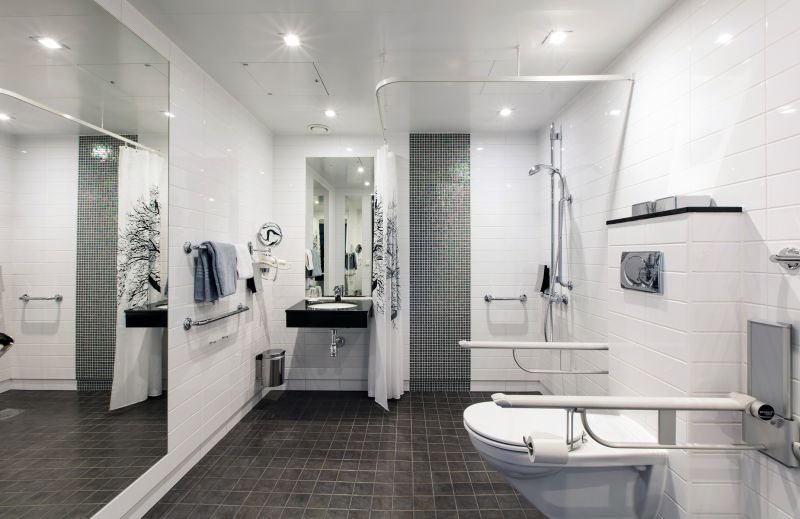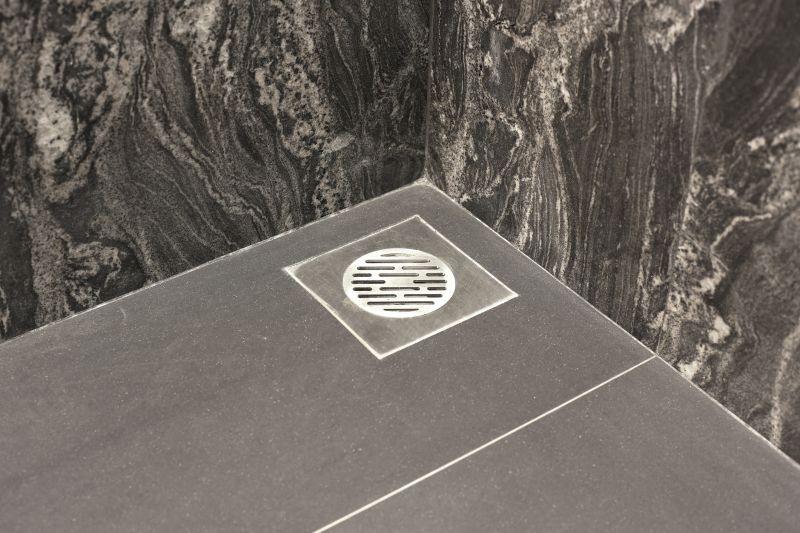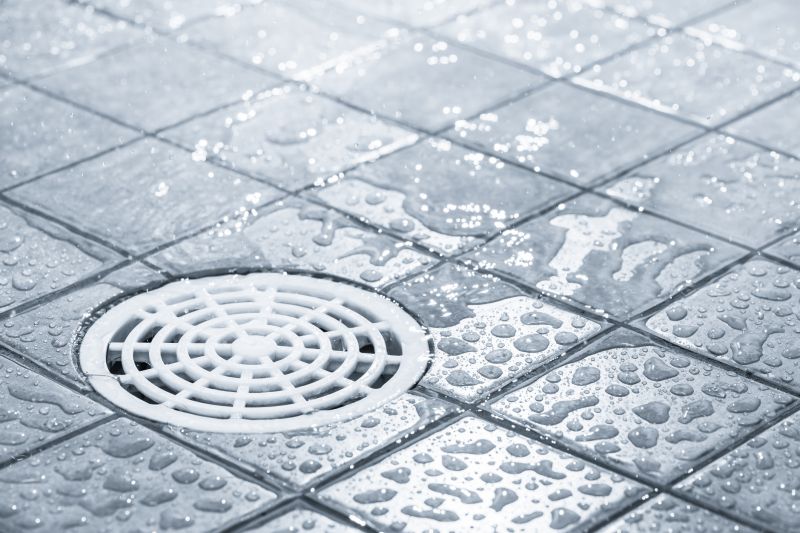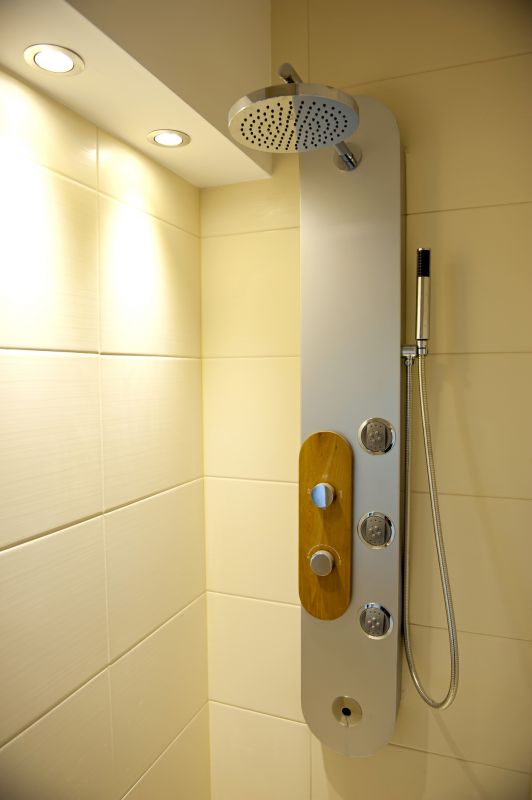Shower Drainage Solutions
Welcome to Aberdeen Showers
Shower Drainage Solutions

About Shower Drainage Solutions
Shop for Shower Drainage Solutions
Shower drainage solutions are essential for maintaining a functional and hygienic bathroom environment. Homeowners often face the challenge of selecting the right drainage system that complements their bathroom design while ensuring efficient water removal. Understanding the various options and considerations can help in making an informed decision that aligns with both aesthetic preferences and practical needs.
One of the primary considerations in choosing a shower drainage solution is the type of drain that best suits the shower's layout and design. Linear drains, point drains, and hidden drains are popular options, each offering unique benefits. Linear drains, for instance, provide a sleek and modern look and are ideal for barrier-free showers, while point drains are traditional and often easier to install.
The material of the drain is another crucial factor. Common materials include stainless steel, plastic, and brass. Stainless steel is known for its durability and resistance to corrosion, making it a preferred choice for many homeowners. Plastic drains are often more affordable and easier to install, whereas brass offers a classic look with excellent longevity.
Finish options can significantly impact the overall appearance of the shower area. Available finishes range from polished and brushed to matte and oil-rubbed, allowing homeowners to match the drain with existing bathroom fixtures. The choice of finish not only affects aesthetics but also maintenance, as some finishes are more resistant to water spots and stains.
Dimensions and compatibility with existing plumbing are also important factors to consider. Drains come in various sizes, and it's essential to select one that fits the shower's layout and plumbing configuration. Ensuring compatibility can prevent water pooling and potential water damage.
Proper upkeep is vital for the longevity and functionality of shower drains. Regular cleaning and maintenance help prevent clogs and ensure efficient water flow. Homeowners should consider the ease of access to the drain for cleaning purposes, as some designs offer removable grates for convenient maintenance.
Linear Drain
Offers a modern look and is ideal for barrier-free showers. Compatible with various tile designs and finishes.
Point Drain
Traditional design, often easier to install. Suitable for most standard shower layouts.
Hidden Drain
Provides a seamless look by concealing the drain under the tile. Requires precise installation.
- Linear, point, and hidden drain options
- Materials: stainless steel, plastic, brass
- Finish options: polished, brushed, matte
- Consider dimensions and plumbing compatibility
| Material | Finish | Dimensions |
|---|---|---|
| Stainless Steel | Brushed | 24" - 60" |
| Plastic | Matte | 4" - 8" |
| Brass | Polished | 6" - 12" |
Understanding Shower Drainage Features and Materials
Shop for Understanding Shower Drainage Features and Materials
A Comprehensive Guide to Choosing the Right Drainage System
When planning a bathroom renovation or constructing a new shower, selecting the right drainage system is crucial to ensure functionality and longevity. Shower drainage systems have evolved significantly, offering homeowners a variety of features and materials to choose from. Understanding these options can help in making an informed decision that complements the overall design and efficiency of the bathroom.
One of the primary considerations when selecting a shower drain is the material. Common materials include stainless steel, brass, and PVC. Stainless steel is favored for its durability and resistance to corrosion, making it an excellent choice for areas with high moisture. Brass offers a classic look and is also resistant to corrosion, though it may require more maintenance to retain its appearance. PVC is a more economical option, known for its ease of installation and resistance to chemical corrosion, but it may not offer the same aesthetic appeal as metal options.
The finish of the drain is another important aspect to consider. Finishes can range from polished and brushed metals to matte and colored options, allowing homeowners to match the drain with other bathroom fixtures. Polished finishes provide a sleek, modern look but may show water spots more readily. Brushed finishes are more forgiving of fingerprints and water spots, offering a more understated appearance.
In addition to material and finish, the dimensions of the drain should be carefully considered. The size of the drain must be compatible with the shower floor and plumbing system to ensure efficient water flow. Linear drains, for example, offer a contemporary aesthetic and can handle larger volumes of water, making them suitable for walk-in showers with open layouts. Point drains are more traditional and are typically placed centrally, requiring the shower floor to slope towards them.
Features & Options:
- Material: Stainless Steel, Brass, PVC
- Finish: Polished, Brushed, Matte
- Type: Linear, Point
- Drain Cover Patterns: Slotted, Tile-In, Grate
- Flow Rate: Standard, High-Capacity
Stainless Steel Drain
Known for its durability and corrosion resistance, ideal for modern bathrooms.
Brass Drain
Offers a timeless look with excellent corrosion resistance, suitable for classic designs.
PVC Drain
Cost-effective and easy to install, ideal for budget-conscious projects.
Compatibility with existing plumbing is another crucial factor. Before choosing a drain, ensure it fits seamlessly with the current plumbing setup to avoid potential issues. Some drains come with adjustable features, allowing for a more flexible installation process. It's also essential to consider the flow rate of the drain, particularly in showers with high water output, to prevent overflow and ensure efficient drainage.
Regular upkeep is necessary to maintain the functionality and appearance of the shower drain. Depending on the material, this may involve periodic cleaning and inspection to prevent clogs and maintain optimal water flow. Stainless steel and brass drains may require polishing to retain their finish, while PVC drains benefit from regular cleaning to avoid buildup.
| Attribute | Description |
|---|---|
| Material | Stainless Steel, Brass, PVC |
| Finish | Polished, Brushed, Matte |
| Dimensions | Varies by type and installation requirements |

Selecting the Perfect Shower Drain: Sizing, Compatibility, and Upkeep
Shop for Selecting the Perfect Shower Drain
Key Considerations for Optimal Shower Drain Performance
Choosing the right shower drain is crucial for both the functionality and aesthetics of your bathroom. With various options available, homeowners must consider factors such as sizing, compatibility with existing plumbing, and maintenance requirements. Understanding these aspects ensures a smooth installation and long-lasting performance.
When it comes to sizing, the drain should match the shower base dimensions and the flow rate of your shower system. A drain that is too small may lead to water pooling, while an oversized drain may require unnecessary modifications to the plumbing. It's essential to measure the shower area accurately and consult any existing plumbing blueprints if available.
Compatibility is another key consideration. Ensure that the drain type aligns with the shower base material, whether it's tile, acrylic, or stone. Additionally, the drain should fit seamlessly with the existing plumbing setup, which may involve checking the pipe diameter and type. Compatibility with waterproofing systems is also vital to prevent leaks and water damage.
Regular upkeep is necessary to maintain optimal drainage performance. Homeowners should periodically clean the drain to remove hair, soap scum, and other debris that can cause clogs. Some drains come with removable grates or strainers, making cleaning easier. It's also wise to inspect the drain for any signs of wear or damage, ensuring timely repairs or replacements.
Linear Drains
Linear drains offer a sleek, modern look and are ideal for barrier-free showers. They provide efficient water drainage and can be installed along the shower wall or at the entrance.
Point Drains
Point drains are the traditional choice, typically located at the center of the shower floor. They require a sloped floor to ensure proper water flow.
Tile-in Drains
Tile-in drains allow for a seamless integration with the shower floor, as tiles can be laid directly into the drain cover. This option is popular for its minimalist appearance.
Material and finish options for shower drains are abundant, ranging from stainless steel to brass, each offering different durability and aesthetic qualities. Stainless steel is known for its corrosion resistance, while brass adds a touch of elegance. The finish can complement other bathroom fixtures, with choices like brushed nickel, chrome, or matte black.
| Attribute | Details |
|---|---|
| Material | Stainless Steel, Brass |
| Finish | Brushed Nickel, Chrome, Matte Black |
| Dimensions | Varies by type (Linear, Point) |
In conclusion, selecting the perfect shower drain involves careful consideration of size, compatibility, and maintenance needs. By focusing on these factors, homeowners can enhance their shower experience while ensuring efficient drainage and a visually appealing bathroom space.
- Consider the flow rate of your shower system
- Ensure compatibility with existing plumbing
- Choose materials that resist corrosion
- Opt for finishes that match your bathroom decor






